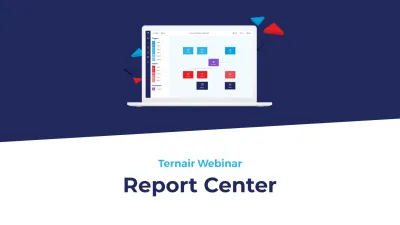Wake up
According to Robert Feltzer, big data has become a catch-all term anno 2016. "It was created by companies that did a lot with data in the past and made smart use of it, such as banks, but also former mail order companies. Now everyone is getting involved. And that's good too, but for many, big data is still a slogan. We are going to do something with big data, we are starting a big data project, but what exactly is the goal? It shakes up many companies and it makes them aware that collecting and structuring and combining data does have the potential to deliver highly relevant insights for the future of their business. And if you don't have your customer data in order and don't make use of it, you also don't have a right to exist in the future. The competition is doing it and if you as an organization don't go along with that, you will eventually fall over. Even if you have a strong brand. You see that happening in practice. Macintosh, for example, started a little too late. If you don't have customer data under control, you're already in a hopeless situation. And if you don't have a strong relationship with the customer, you won't keep out today's Zalando's. So big data for marketing - it used to be called CRM -, one-to-one marketing or database marketing, did get a lot more attention because of this to run the business well."
Certain
The situation in traditional retail is very worrying, according to Marcel Lamers. "It's not just about how they deal with data, but also about the combination of offline and online, and how the customer deals with it. It's about how you trigger the customer. And you do that not only by using big data, but also by creating a world of experience. And by a good link between online and offline, the physical store." Martin Lourens returns to the example of Macintosh. "In 2012, they looked at whether they could replace their application. Because of the investment involved, they decided against it at the time. They started focusing on tweaking their existing system to get something out of it in terms of e-commerce. So that didn't work out, as we now know. And that's because the volume of data since mobile and Internet has skyrocketed in the last decade. The business intelligence vendors have capitalized on that with new software to extract value from data. We see an increasing demand for functionalities to enrich and personalize data. For an application to work well, data is key, the key to success. Yet we have to conclude that, in general, hardly any data strategy is set up. And there should be. If the demand is so broad and you don't put data centrally, that's very dangerous. If you look at Macintosh, their system was so cumbersome that it was difficult to make changes when it was necessary. It's better if organizations have the ability to use different applications side by side, so they can always replace or add elements without you having data loss. Because, application development is moving faster and faster, and social is an important part of that. Social is a good addition to customer interaction. So the basis has to be right."
Not on the agenda
Marcel Lamers: "If you look at traditional retailers, it is striking that they do not react fast enough to changing customer behavior and all the new developments in the market. There is a cry of 'we have to go online', so we are going to do a package selection, while the question that should precede this is 'how do we want to be seen in the market?', 'how does the customer see us?' and 'what does the new customer behavior look like?' In short, translating the traditional strategy into an online strategy. You can start looking at all kinds of solutions, but if you don't know exactly what you want with all the customer information available, combined offline and online, you're going to buy something, not knowing what to do with it. If organizations don't operate from their strategy, they make the wrong choices." True, says Martin Lourens. "The problem is that it is often not on the agendas of management or board of directors. If the issue doesn't live there and application choices or partner choices have to be made, or choices regarding organizational training to actually combine online and offline, then it really already stops. You can start adding social in your front interaction, but then the offline organization has to be able to deal with that." Pieter van der Heijden: "Often organizations are too concerned with output, conversion and sales instead of thinking about the preliminary process." Coert Knijnenberg: "Indeed, it's too much about short-term thinking. What does it deliver? If you can't determine ROI immediately, you already have a problem with traditional organizations. But this kind of fundamental thing is a matter of years, long-term decisions. They are fundamental choices. At the base, then everything can be expanded. But assuming that everything fits into one system is out of date.
Many choices
Erik van Stiphout: "The problem is that the landscape is somewhat application vendor driven. All providers mainly put themselves, their systems and applications, at the center. Therefore it is quite difficult for a retailer to oversee. Where is it going, what will the data landscape look like in five years? They do see the opportunities of data analytics, they know they have to keep up because otherwise they will be overtaken, but they often dwell for a long time on questions such as 'how should we collect our data and combine it intelligently to achieve our business goals?' And 'what vendors are on the market, what specialty do they have?' It's a jumble of offerings. And the developments are so rapid that it is almost impossible to oversee. It is therefore difficult to be able to make informed choices in this." Martin Lourens agrees. "Product life cycles are getting shorter and shorter. Then you would think that people would mainly look at products that are either easy to replace or organizations make a smart choice in core applications where integration is easy and feasible. But often people still look at all-encompassing systems where organizations literally lock themselves in. That happens when there is no vision for the data system. But it wouldn't be wrong to get the vision of "we need to be able to change" on your customers' minds. So a short-term vision is fine, but with short-term solutions that respond to the short-term landscape. So: constantly innovate and respond to change."
Traditional thinking
Marcel Lamers: "Particularly in B2B organizations, it appears that the knowledge is still insufficient when it comes to the changes in buying products and services. And ultimately executing the online marketing activities. This requires a completely different skillset from employees who mainly focus on traditional marketing. Often, organizations still think too traditionally. We recommend first taking stock and then possibly investing in internal knowledge and skills. Because if that is not up to date and structured beforehand, then you are missing the mark." I concur, says Erik van Stiphout. "The scarcity in the IT market is well known, but the number of people who can deploy personalized marketing data applications are also very scarce." Pieter van der Heijden: "We notice an increasing demand from online retailers who want to do personalized, online marketing. Together we are taking on the challenge of personalizing anonymous big data as much as possible."
Customer Recognize
Marcel Lamers: "Indeed, companies like Coolblue, Wehkamp and Bol.com have that knowledge in-house. That is, of course, their business. They have entire departments that focus exclusively on doing online marketing and online business every day. There is so much knowledge and expertise there." The pure players are always taken as an example, when it comes to customer segmentation and online customer journeys, says Martin Lourens. "They have operational excellence from the request for a product to the transaction and finally the delivery. And even if the customer is subsequently dissatisfied, they have set up the internal organization so that it's all about the experience. They go very far in that. They can also offer a very broad spectrum of products linked to all the life cycles of individuals. But the joke is, right now they can't recognize a customer on the back end on one channel and thus direct them to another channel as well. They recognize that. Incidentally, they are working behind the scenes with their own IT department to get this done."
Clicks and bricks
It is logical to explain that pure players go offline, according to Marcel Lamers. "If you serve the market as a pure player, you can only look at customer behavior based on the customer journey online. So a Coolblue and Zalando will eventually also invest in a 'brick-and-mortar store,' or bricks. This increases the customer journey and creates additional touch points. The power lies in the combination of a perfect online and offline service experience," believes Lamers. Robert Feltzer adds: "What strikes me with many organizations is that clicks and bricks are still considered two different divisions. Who often don't even know each other. At many large retailers, the online department is still a separate department and the CRM department that optimizes customer relations is in a different place. They are often still too many islands. And the bigger the company, the more separated it is."
Livewall
Bever Outdoor, according to Pieter van der Heijden, is a party that has the combination of online and offline well in hand. "They make a strong link between online and offline." Marcel Lamers also has a favorite. "The perfect party, unfortunately not in Europe, is Aldo Shoe Fashion in America. They bring the offline and online worlds together very well. In the stores they have displays, a livewall with buy buttons. Here you can, for example, have shoes combined with other garments, even competitors' products. The buy button is directly linked to your mobile, so Aldo has all the data immediately and can also handle the payment process. No need to go to the checkout and the bag is waiting for you. Aldo has really implemented the online-offline combination to perfection." Fortunately, there are also good examples in the Netherlands, Erik van Stiphout believes. "Bijenkorf, too, has that combination well in place. If a product is sold out in the store, an employee orders it directly online."
Quick wins
The main reason why it is so organizationally difficult for many companies to make the combination between online and offline is that years ago online click behavior was still largely anonymous, Erik van Stiphout believes. "With the advent of smart online recognition methods and trackers within e-mail marketing, click behavior also became identifiable. NAW data and click behavior were linked. And then suddenly those worlds come together. The organizational aspect always takes the longest. It is quite a journey to reverse the organizational structure and integrate departments. A success case from online data can trigger a lot. Then suddenly the cogs start turning within a company. That way, you can shake people up internally using results and make added value visible. So online is becoming more and more identifiable compared to before." Martin Lourens: "In terms of communication and marketing about content, so front end - content, that channel is not yet put down well enough. So the unknown visitor, who comes from a search engine or a mailing, you should receive well. Then you already have a lot of profit. Before you convert, you can already do a lot for your customer or even send him away very nicely, in the sense of "you're not a customer to me. Those structures and ways of thinking are starting to penetrate organizations more and more when it comes to sales and marketing, the systems could already do it."
Data quality
Robert Feltzer: "Data quality has another aspect: to what extent are data files complete and correct? Surely most customer files are somewhat contaminated or incomplete. New customers arrive, people die, on average about seven percent of the population moves every year, et cetera. A lot happens and maintaining customer data properly is essential. A lot of companies are not set up to maintain that. In fact, you should be refreshing data almost real-time. A lot of customer information is relevant, but it's hard to determine in advance what data you need to link together to be relevant. You do that during the process. For example, for one product the family composition is leading, because a child has been born or a house is for sale, while for other products these variables are not relevant. The moment then plays an important role, for example; summer, winter, Mother's Day, you name it. Using statistical analysis, you can test all kinds of variables by trying out different communications. Which message appeals most to which segment, linked to certain variables. And so offers become more and more personalized. Online you have infinite possibilities in this and you no longer have to search for what is the best offer, because for the neighbor a different offer is relevant than for me. So differentiation for different customers is very important, but you have to have the content for that."
Individual customer needs
According to Pieter van der Heijden, though, they always remain assumptions. "If a combination works perfectly for a certain customer group it does not mean that every individual will find it a good choice. There are always exceptions. So the bulk will be content and it will certainly increase conversion, but that doesn't mean that you immediately fulfill the desire for every customer. The development of certain software does make it possible to tailor content in certain places on a Web site more and more to the individual customer." Robert Feltzer: "Indeed, you have digital opportunities to interact one-on-one. Consequently, great organizations do not assume one website or one content strategy but those that invest in numerous options in order to respond to individual customer needs. With personalization and relevance as a starting point." Erik van Stiphout: "It is important to record behavior because behavior has a high predictive value. And then you also want to have a customer's contact information. Delivery data and email confirmations are reliable data. Everyone has his or her package delivered to a relevant address, and email confirmations are there for a reason, too. This data is crucial to link different sources together. You have to make filling in NAW fields and email fields so relevant to the customer that they always fill this in correctly and correctly." Coert Knijnenberg: "There is a wealth of data rotting away, obsolete, while metadata is precisely data that is incredibly reliable."
Bonus card
It is obviously important for a company that the data a customer leaves behind is reliable, Erik van Stiphout emphasizes again. "At the start of the AH bonus card, this was not optimal at first. The customer had no interest in filling in the NAW data correctly. Even with filling in fake data the discount could be enjoyed. So always provide an incentive so that a customer has an interest in filling in his or her personal data correctly and completely. This is a prerequisite for doing personalized marketing well." Robert Feltzer: "AH did then deploy filters to clean up the database, and they succeeded reasonably well. They even chose to throw away old data and they then started a new process and included privacy regulations." And then AH very cleverly linked data, Erik van Stiphout knows. "Even before a child was born, the purchases/transactions were looked at and from that data insight was gained into customer behavior and even changes in family composition, allowing AH to come up with the right offers in time."
Data leaks
According to Robert Feltzer, the quality of data does increase, although he says that also has to do with new legislation that came into effect on January 1, 2016 that deals with, among other things, the phenomenon of data leaks. That has very much to do with quality. And most companies don't realize that. Right now, if a financial institution sends you a letter and you've moved, they haven't implemented that and the letter is delivered to the wrong address, that's legally called a data breach. That carries a huge fine just because of a wrong address. Many organizations are going to be concerned about this, because how are you going to prevent it? That's not always easy. If it's an advertising flyer, it's not so bad, but if it's your policy data or purchase data, it makes a big difference. That's why it's important to invest in data quality. Not only to be able to use valid data to optimize the customer journey, but also to avoid errors. It is extremely annoying if someone is incorrectly registered and if, for example, a woman is continuously addressed with sir in the salutation."
Auto industry
When it comes to qualitative data, the auto industry has missed huge opportunities, according to Martin Lourens. "They had a very good opportunity years ago to do much more targeted personalization. After all, the industry had access to all the NAW data of customers. In addition, they know exactly when a car has to come in again for a service/checkup/service based on the mileage. They could have very easily personalized this and used more touch points to grab sales moments. They only found out when the RDW data was closed that they missed huge opportunities by not connecting the valuable data. To this day, they "suffer" from that. Last week I received a notification from a dealer to stop by again with my car for a service, even though I have been driving a completely different brand for three years. The realization of what you have in terms of data and what you can do with it is still unknown to many organizations.
Apparate as a source of data
Robert Feltzer goes a step further. "Cars will soon provide us with information themselves. After all, they are already equipped with smart technology in the factory. Through the app, for example, you can already see where a car is parked. Google is also taking big steps. For example, they can measure whether you have been in the store offline, where just before you visited the shop online. Simply because they track your cell phone. They just don't know yet if you bought the product. And we once gave Google permission to track that. So they do that nicely. And they can cleverly combine it and sell it to retailers, because that's useful information. Those are developments that are coming more and more. All those new cars already have those plugs in. Lease companies retrofit those systems to measure driving behavior and fuel consumption to check whether you're mistreating the car or not. Insurance companies in Canada and England, for example, discount premiums based on that data. So yes, then humans no longer even need to be the source of data, but the device. The ownership of data, by the way, is not invested. From common sense, the data belongs to the consumer. As a company, clearly ask permission from the consumer and use it for his/her benefit, not to benefit yourself." According to Erik van Stiphout, the common man on the street is still not convinced of this. "They are quite suspicious about the way large companies handle their personal data." Marcel Lamers does observe a development in this: "Young people share really everything online. They also value being fed relevant information."
Winning trust
Coert Knijnenberg then wonders why adblockers are used so much? According to Robert Feltzer, it is because they are mostly spammed on click behavior, which creates irritation "The example mentioned of the trip to Rome is an example of that." Pieter van der Heijden elaborates: "Nowadays it is perfectly possible from a marketing point of view to see whether someone has already converted. If you use that smartly, you can also do it relevantly. And using other data, you should enrich that to take it one step further." Erik van Stiphout: "Indeed, that's how you could make a more relevant offer based on that journey. For example, consider the offer to rent a car in Rome." An adblocker, according to Robert Feltzer, is actually a good wake-up call to be smart about relevance and the customer and not just focus on selling. That's the wrong attitude. Then the customer will not trust you. Knab is a great example of a party that knows how to gain trust. If you have a savings account with Knab and a competitor offers a higher interest rate, Knab informs you of this. It is up to the customer to choose whether or not to switch. So it's to your advantage, not to theirs. That's what Coolblue also does in concept. They do it for you. And then you are willing to pay a few tens more." According to Erik van Stiphout, real-time serving of a suitable offer is one of the biggest challenges in the coming years. Functionally there is no longer an obstacle, the tools are there. Only the crux is in data integration and having enough content. Moreover, the possibilities are also enormous. So many combinations are possible. Testing what works or doesn't work and a cost-benefit analysis of the added value of all those different combinations is wise. Robert Feltzer does emphasize that, when it comes to big data, a lot of great developments have been made technologically in recent years. "We can start steering not only based on data what the consumer is interested in and through which channel, but also what is the tone of voice of the text he receives. And additionally the image he receives. It makes a difference whether someone sees a jar of peanut butter on a set table or standalone with a white background. I think that's where the biggest strides can be made." The future belongs to those companies that master big data, Pieter van der Heijden believes. "Look at the largest hotel chain in the world, airbnb, they own 0 hotels but they own data. Look at the largest cab company in the world, uber, they own 0 cabs but they own data. Whoever controls big data, controls the customer."





